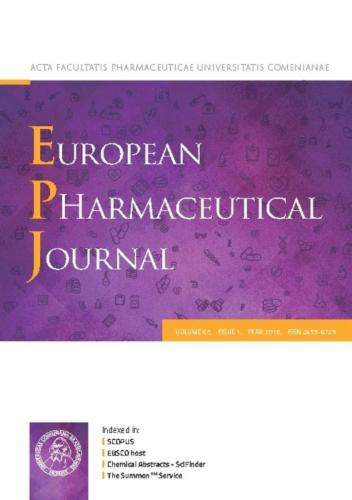In vitro biophysical and biological profiling of commercial lipid-based dry eye products
IF 4.7
3区 医学
Q1 PHARMACOLOGY & PHARMACY
引用次数: 0
Abstract
There is an increasing number of products available for treatment of dry eye disease (DED), thereby creating a challenge in selecting a suitable product. Commercial products have rarely been studied in the same experimental setup, and in the case of lipid-based products, their baseline capabilities to target central defects of DED requires a more thorough investigation. This study aims to discern potential differences in their abilities to stabilize the tear film, reduce the evaporation of water, and impact on corneal epithelial cell viability and recovery utilizing various biophysical and biological in vitro techniques.
Seven commercial lipid-based eye drops (Cationorm®, Desodrop®, Evotears®, Oxyal® Triple Action, Puro™ Suoja, Systane® Complete, Thealipid®) were selected for the in vitro biophysical and biological profiling studies. Biophysical properties critical for tear film stability and evaporation reduction were evaluated using Langmuir trough techniques, while cell viability and recovery were assessed by an MTT assay after exposing either healthy or damaged human corneal epithelial cells to the products.
The majority of the products spread reasonably well at the aqueous-air interface, suggesting that they bear intrinsic properties which may be beneficial to improving the coverage of the tear film lipid layer. However, only subtle evaporation reduction capabilities were observed, indicating that the products are not optimal at targeting this defect. Clear differences in cell viability and recovery were observed, with three of the products being able to promote the recovery of damaged cells. The significance of our findings with regards to DED treatment outcomes will require additional studies in the future.

商业脂基干眼症产品的体外生物物理和生物学分析
有越来越多的产品可用于治疗干眼病(DED),因此在选择一个合适的产品的挑战。商业产品很少在相同的实验设置中进行研究,并且在脂质产品的情况下,它们针对DED中心缺陷的基线能力需要更彻底的调查。本研究旨在利用各种生物物理和生物体外技术来识别它们在稳定泪膜、减少水分蒸发以及影响角膜上皮细胞活力和恢复方面的潜在差异。七种商业脂质滴眼液(Cationorm®,Desodrop®,Evotears®,Oxyal®Triple Action, Puro™Suoja, Systane®Complete, Thealipid®)被选择用于体外生物物理和生物学分析研究。使用Langmuir槽技术评估了对泪膜稳定性和蒸发减少至关重要的生物物理特性,而在将健康或受损的人角膜上皮细胞暴露于产品后,通过MTT试验评估了细胞活力和恢复。大多数产品在水-空气界面上的扩散相当好,这表明它们具有可能有利于提高泪膜脂质层覆盖率的内在特性。然而,仅观察到细微的蒸发减少能力,表明产品不是针对该缺陷的最佳选择。观察到细胞活力和恢复的明显差异,其中三种产品能够促进受损细胞的恢复。我们的研究结果对于DED治疗结果的重要性需要在未来进行更多的研究。
本文章由计算机程序翻译,如有差异,请以英文原文为准。
求助全文
约1分钟内获得全文
求助全文
来源期刊
CiteScore
9.60
自引率
2.20%
发文量
248
审稿时长
50 days
期刊介绍:
The journal publishes research articles, review articles and scientific commentaries on all aspects of the pharmaceutical sciences with emphasis on conceptual novelty and scientific quality. The Editors welcome articles in this multidisciplinary field, with a focus on topics relevant for drug discovery and development.
More specifically, the Journal publishes reports on medicinal chemistry, pharmacology, drug absorption and metabolism, pharmacokinetics and pharmacodynamics, pharmaceutical and biomedical analysis, drug delivery (including gene delivery), drug targeting, pharmaceutical technology, pharmaceutical biotechnology and clinical drug evaluation. The journal will typically not give priority to manuscripts focusing primarily on organic synthesis, natural products, adaptation of analytical approaches, or discussions pertaining to drug policy making.
Scientific commentaries and review articles are generally by invitation only or by consent of the Editors. Proceedings of scientific meetings may be published as special issues or supplements to the Journal.

 求助内容:
求助内容: 应助结果提醒方式:
应助结果提醒方式:


